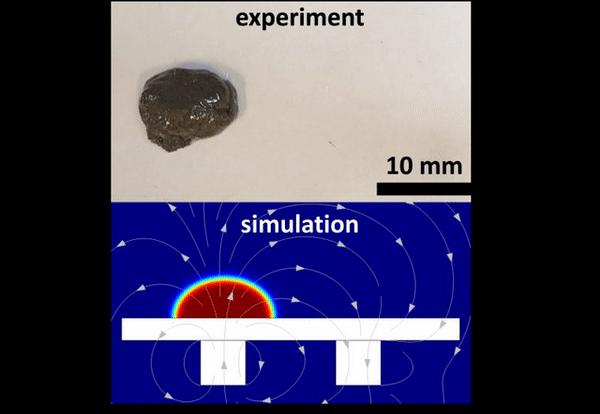Reports from the Heart of the Machine
Machine Heart Editorial Department
Researchers from Harbin Institute of Technology and the University of Chinese in Hong Kong have jointly developed a magnetic slime robot with powerful deformation function.
Friends who have seen the movie "Venom" know that the "symbiote" appears in the form of a liquid, even if it is beaten into a meat paste or a pool of water, as long as there is enough time to recover. Now, robots with such powerful repair capabilities have emerged.
It's just that it looks a little "dish", like a lump of clay:

But its functionality should not be underestimated, and it can be arbitrarily deformed to pass through narrow gaps:
Navigating the maze:
Repairable after breaking:
You can even use your own stickiness and deformation to connect the two wires to form a pathway:
The "magnetic slime robot," which has the same name as slime monster slime, was developed by researchers from Harbin Institute of Technology and Hong Kong's Chinese University, and published in the peer-reviewed journal Advanced Functional Materials.
Address of the paper: https://onlinelibrary.wiley.com/doi/abs/10.1002/adfm.202112508
Slime is made from a mixture of polyvinyl alcohol, borax and neodymium magnet particles. Zhang Li, a member of the research team and a professor at the University of Chinese in Hong Kong, said: "This material is like a mixture of water and starch, a non-Newtonian fluid, and its viscosity changes under the action of external forces. When you touch it quickly, it's like a solid. When you touch it gently and slowly, it's like a liquid."
Since this mucus contains magnetic particles such as neodymium magnets, it is able to control its movement and deformation by magnets, and has good conductivity, can be connected to electrodes, acting as circuit switches.
Slime has excellent tensile properties and can pass through narrow crevices of 1.5mm without breaking. The study compared the tensile capabilities of the ferromagnetic fluid droplet robot and slime under the same magnetic field conditions.
In addition, slime can be O-shaped or C-shaped to surround small objects, which some scientists believe may be useful for the digestive system, such as reducing the harm of swallowing small batteries. They believe that using this slime robot to encapsulate the battery, forming an inert coating, can avoid the harm of toxic electrolyte leakage.
However, the magnetic particles in the mucus are themselves toxic. Professor Zhang Li said: "The safety of slime depends largely on the length of time it stays in the human body."
Of course, slime can not only be dark green, but with a little paint it can also become colorful.
At present, slime does not have full autonomous control capabilities, and needs to use magnetic force to control its movement and deformation. The research focuses on the material properties of magnetic slime, with the ultimate goal of deploying slime in a robotic way.
Reference Links:
https://twitter.com/newscientist/status/1509599345255100417
https://www.theguardian.com/science/2022/apr/01/magnetic-turd-scientists-invent-moving-slime-that-could-be-used-in-human-digestive-systems